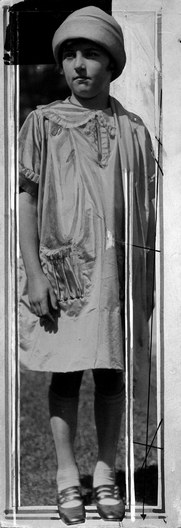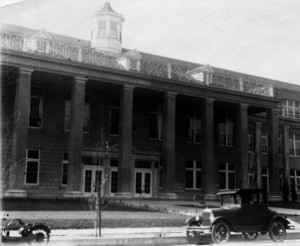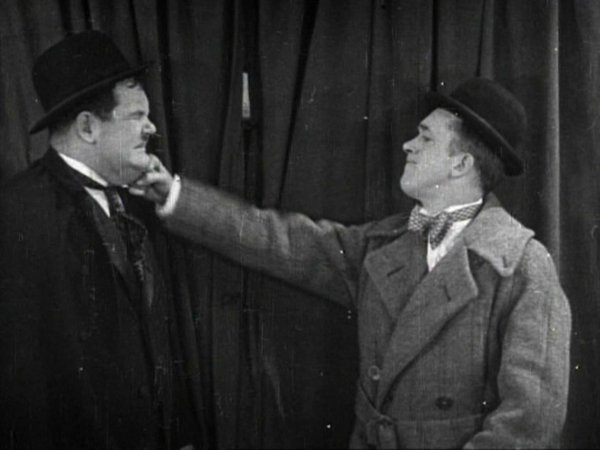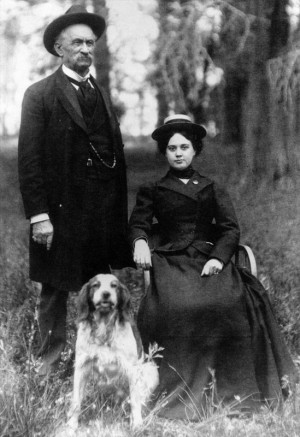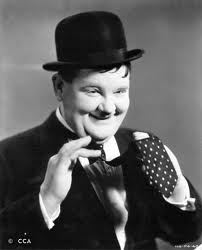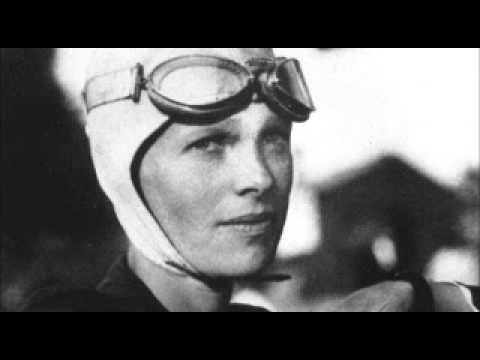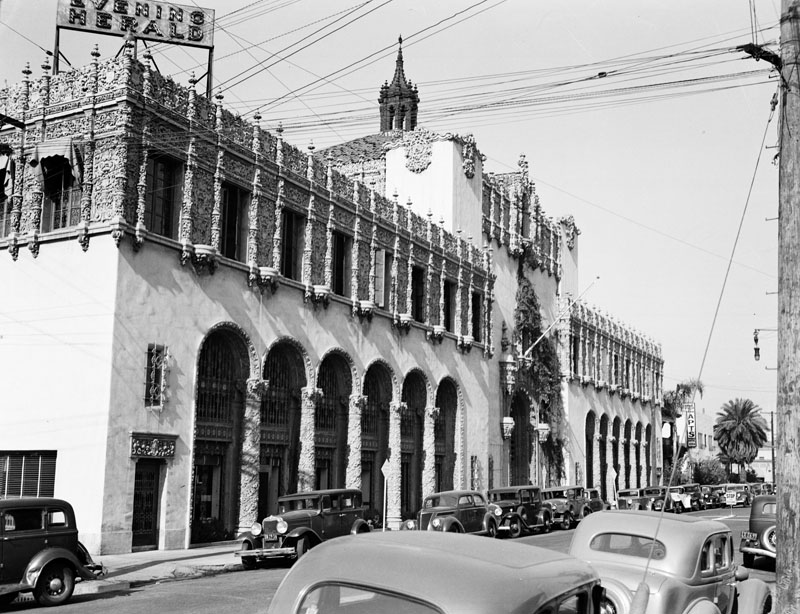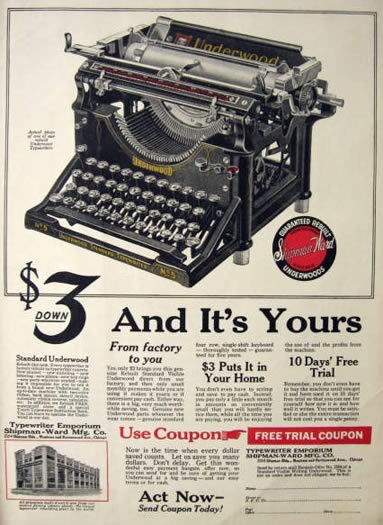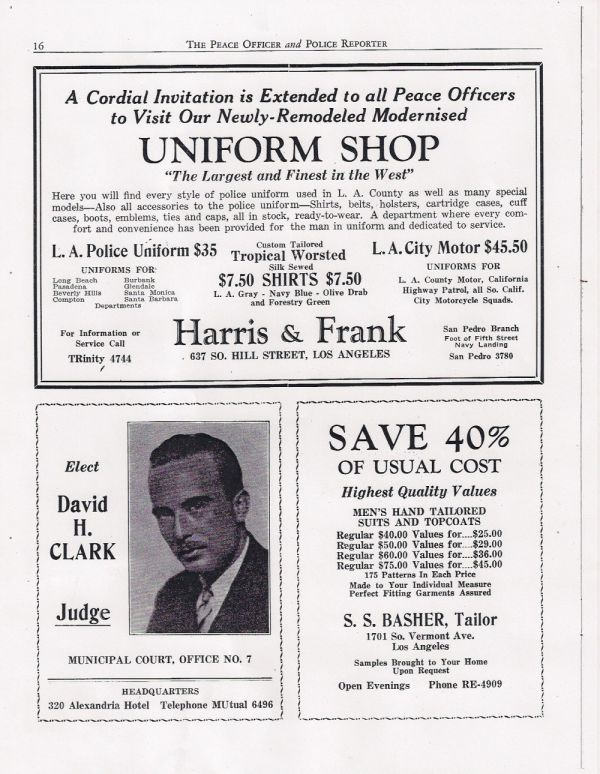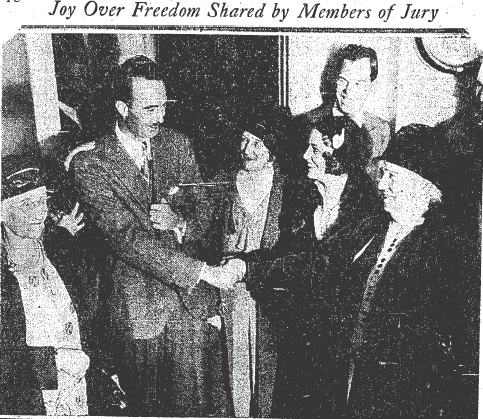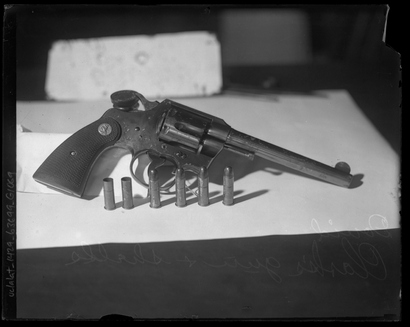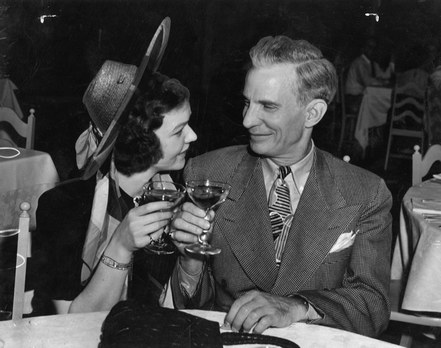The news of the kidnapping and brutal mutilation murder of twelve year old school girl, Marion Parker, had shocked Los Angeles residents more than any crime in recent memory.
Everyone in the city was following the hunt for Hickman. Aggie Underwood watched the case unfold from the special vantage point of the newsroom at the Los Angeles Daily Record. She read the copy as it was transformed into the headlines that kept Angelenos on the pins and needles awaiting word of Hickman’s capture.
The citizens’ outrage manifested itself in the near lynching of a young man who had the misfortune of resembling William Edward Hickman. Other Hickman-look-a-likes were tracked, taunted, and threatened all over the city. More than 7,000 police officers, augmented by 12,000 members of the American Legion, and cops from neighboring cities were out hunting the killer.
Because Hickman’s photo was on the front page of every newspaper from L.A. to San Francisco and beyond, cops were beginning to get a picture of him not only as Marion Parker’s killer, but as a bandit. People were coming forward who were able to I.D. Hickman as a drugstore robber; and it seemed that when he hadn’t been sticking up pharmacies he had been cashing bad checks.
Reporters were digging into every corner of Hickman’s life, including the inevitable interviews with neighbors, who described him as a “mild boy”, and his mother who predictably sobbed and referred to him as a “good, clean boy”.
Mrs. Hickman’s good, clean boy had managed to elude the law from Los Angeles all the way up to Pendleton, Oregon where, on December 22, 1927, he was captured following a car chase on the Columbia River Highway.
Aggie was in the newsroom when the wire came in reporting the capture of William Edward Hickman. In her excitement she decided to phone her husband with the headline that everyone in Los Angeles was waiting for. Aggie’s friend and mentor Gertrude Price overheard the conversation, and when Aggie was finished Gertrude took her aside and told her that she must never tell anyone, even a family member, about a story until it appeared in print. At first Aggie was crushed, she’d never have done anything to disappoint Price. It didn’t take Aggie long to realize that Price wasn’t upset, angry, or disappointed, she was teaching her a fundamental lesson about the newspaper business. It was a lesson that Aggie would never forget.
It took Hickman only a few minutes in captivity to begin to shift the blame for Marion Parker’s atrocious murder onto the shoulders of an accomplice he named as Andrew Cramer. He began to weave a story that absolved him from everything that had happened to Marion except for the initial kidnapping.
Hickman said: “Marion and I were like brother and sister. She liked me but she did not like Cramer, and she said she would like to stay with me all the time.” He went on to say that he had been gentle with Marion and had even taken her to see a movie on the night before she was killed.
As long as he was in a confessing frame of mind, Hickman admitted to several of the drugstore robberies that he’d been suspected of committing. He claimed to have had an accomplice for those crimes as well.
Cops had to follow up on Hickman’s assertion that his accomplice, Cramer, had been the one to murder and mutilate Marion Parker. What they discovered was that there really was a Cramer, three of them actually — and it was Kramer, with a “K”. The Kramer in question had an unbreakable alibi; he’d been in jail since mid-August. The other two Kramer brothers were also exonerated, which left no one but William Edward Hickman as the sole perpetrator of the unspeakable child murder.
Prior to being returned to Los Angeles, Hickman was examined by Dr. W. D. McNary, superintendent of the Eastern Oregon Asylum for the Insane. Dr. McNary said that Hickman’s mind “…seemed clear. He told a straight, coherent story and never was at a loss for words. There was nothing about him to indicate insanity. He did not differ a bit from hundreds of thousands of other young men”.
Hickman revealed to Dr. McNary that “…he does not like girls, that he is deeply religious and that his ambition was to become a minister. Several times he made mention of God and in discussing his capture took the attitude that since God willed it, that it had to be.”
While awaiting extradition from Oregon to California, Hickman attempted suicide by strangling himself with a handkerchief. He was subdued by a guard. When the first try failed, he immediately tried again to end his life, this time by diving heard first from his bunk to the concrete floor – he was caught around the waist by one of the guards.
Hickman and his captors, Chief Davis, Chief of Detectives Cline, and District Attorney Keyes, all of Los Angeles, were soon to be headed south on Southern Pacific train No. 16.
Hickman would be finally be held to answer for his crimes.
NEXT TIME: JUSTICE PREVAILS.


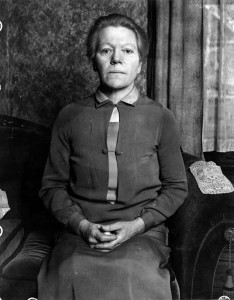
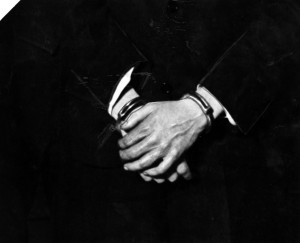

![Mariion, Mrs. Parker, Marjorie. [Photo courtesy LAPL]](https://derangedlacrimes.com/wp-content/uploads/2012/12/00027810_marianfamily-300x229.jpg)



![William Edward Hickman [Photo courtesy of LAPL]](https://derangedlacrimes.com/wp-content/uploads/2012/12/00027382_hickman-222x300.jpg)
